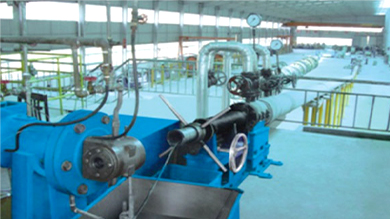Dec . 09, 2024 16:41 Back to list
Two-Way Air Control Valve for Efficient Airflow Management and Distribution
Understanding Two-Way Air Valves A Comprehensive Overview
In various industrial and engineering applications, controlling airflow is crucial for maintaining optimal performance and safety. One of the key components used to achieve this control is the two-way air valve. Often referred to as a two-way valve or a directional control valve, these devices play a significant role in managing the flow of air or gas in a system. This article delves into the important aspects of two-way air valves, including their functions, types, applications, and benefits.
What is a Two-Way Air Valve?
A two-way air valve is a device that allows for the control of airflow in two directions—either to open or close the passage of air or gas. Unlike three-way valves that can redirect flow to multiple outputs, two-way valves operate by simply allowing or stopping the flow of air, making them straightforward in design and function. Typically, these valves are actuated either manually or automatically and can be used in various pneumatic systems.
How Does a Two-Way Air Valve Work?
The operation of a two-way air valve is based on its simple mechanism. It usually consists of an inlet and an outlet port. When the valve is in the open position, air flows from the inlet to the outlet, contributing to the system's overall operation. Conversely, when the valve is closed, the flow of air is halted, thereby controlling pressure and preventing any leakage. This basic operation is crucial in systems where precise control of airflow is necessary.
Types of Two-Way Valves
Two-way air valves can be categorized based on different criteria, including type of actuation, material, and design. The most common types include
1. Manual Valves Operated by a hand lever, providing direct control for on/off functionality. 2. Electric Actuated Valves Equipped with electric motors that allow for remote operation and automation, making them ideal for complex systems requiring precise control.
3. Pneumatic Actuated Valves Utilizes compressed air to automate the opening and closing of the valve, commonly used in applications involving pneumatic systems.
4. Solenoid Valves Electromechanical devices that use a solenoid to control the flow of air, providing quick and reliable operation.
Applications of Two-Way Air Valves
Two-way air valves are employed in a wide range of applications across different industries
. Some notable examples includetwo way air valve

- HVAC Systems In heating, ventilation, and air conditioning systems, these valves help regulate airflow to maintain desired temperatures and air quality.
- Manufacturing Used in pneumatic conveyors, controlling air supply to various tools and equipment, ensuring efficient production processes.
- Automotive In automotive systems, these valves manage air intake and exhaust in engines, playing a critical role in overall performance and emissions control.
- Laboratories Essential in laboratory settings for controlling the flow of gases in experiments, enhancing safety and precision.
Benefits of Using Two-Way Air Valves
The advantages of integrating two-way air valves into systems are numerous
1. Simplicity Their straightforward design makes installation and maintenance relatively simple.
2. Cost-Effective Typically more affordable than more complex valve systems, they can be a budget-friendly option without sacrificing performance.
3. Reliability With fewer moving parts, two-way valves tend to be more reliable and have a longer lifespan.
4. Versatility Accommodating a variety of applications, they can be used in different environments and industries.
Conclusion
Two-way air valves are vital components in controlling airflow across various applications. Their ability to regulate the movement of air efficiently and effectively makes them indispensable in many industries, from HVAC to manufacturing and beyond. Understanding the types, functionality, and benefits of two-way air valves can assist engineers and technicians in selecting the appropriate valve for their specific needs, ultimately leading to enhanced system performance and safety. As technology continues to evolve, the applications and innovations surrounding two-way air valves are bound to expand, further solidifying their place in modern engineering and industrial practices.
Share
-
Reliable Wafer Type Butterfly Valves for Every IndustryNewsJul.25,2025
-
Reliable Flow Control Begins with the Right Ball Check ValveNewsJul.25,2025
-
Precision Flow Control Starts with Quality ValvesNewsJul.25,2025
-
Industrial Flow Control ReliabilityNewsJul.25,2025
-
Engineered for Efficiency Gate Valves That Power Industrial PerformanceNewsJul.25,2025
-
Empowering Infrastructure Through Quality ManufacturingNewsJul.25,2025


